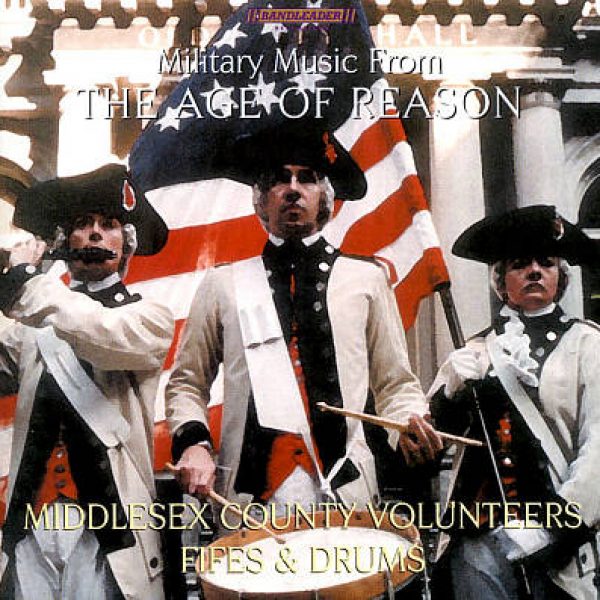Description
FOR this, our third collection, we were interested in discovering the favorites of the professional fifers and drummers during the early years of the Republic, and began collecting some of the notebooks, journals, and tutors kept by musicians in North America between 1750 and 1820. These are mostly American authors; some are published works by regimental drum majors intended for sale as parlor amusements, while others are simply scrap notebooks of the infantry fifer in the field, kept as a personal memorandum.
Note to customers: available as a digital download only…our CD stock has sold out.
Fife score for Dead March is available for purchase as a digital download.
Selections
|
|
Track Samples
| DEVON’S SLIDE – MP3 (372K)Duke of Gloster’s March White Cockade Robinson’s MarchWhile our group is from Eastern Massachusetts, the hotbed of American fife and drum lies some two hours southwest of us in the Connecticut River Valley. One of our friends from down that way offered the opinion that what was missing from our repertoire was “a good 2/4 march set”!! Sensing our puzzlement, Jim Clark, also a native of the valley, presented this drum score to accompany Sarah’s fife score by way of explanation. We named this set of quick reels or slides after the misadventures of one of our young fifers. It should be noted that the old Scots rebel song “White Cockade” was played by the Acton Minutemen as they followed Capt. Isaac Davis down to the Old North Bridge at Concord on April 19, 1775 to meet the English troops and fire “the shot heard round the world”. Fife score: Sarah MacConduibh. Drum score: James Martin Clark FUNERAL DUTY –MP3 (436K)Dead March The death rate in all but most recent military camps was horrific, even without the assistance of enemy forces. Until modern antiseptic procedures, funeral duty was an all too frequent certainty for the field musician. Some sources report George Washington’s Continentals loosing 12,000 men to combat death, with over 120,000 to camp sickness. Again it falls to the musicians to dignify the mundane. This is the duty book funeral from Camp Dupont in Pennsylvania circa 1815. “We all deserve a hero’s burial after passing through this vale of tears.” (O’Corrain) Fife score: Sarah MacConduibh Drum score: Jim MacConduibh Funerary detail: Pennywhistle, Steven Taskovics; Tabor, Jim MacConduibh; Muffled Drums, Andrea Taskovics and Michael Godin; Bass Drum Rolls, Michael Cahill; Concert Bass, Michael Moran. TATTOO –MP3 (412K)Guilderoy Trip to Ranelagh The Honey Moon A QuickstepThis duty evolved from the need of the army to keep up good relations with the garrison town. At a particular time of night, the corps of fifes and drums would march from camp through the town with a detachment of the camp guards to collect the soldiers from the taverns and other establishments and return all to camp. This was not unlike the modern Navy’s Shore Patrol, and also served notice in a fortified town that the gates would be closing for the night. If the regiment was encamped in the field, tattoo was beaten to signal the posting of night watch and closing of the camp prior to lights out. Here are some marches and a strathspey, led off with a suitably ominous rendition of what appears to be an 18th c. chestnut, “Guilderoy”. NB: The term “tattoo” evolved from the Dutch “Doe den tap toe”, roughly translated “turn off the taps” (as in beer spigots), or stop serving liquor. Fife score: Skip Healy Drum score: Jim MacConduibh/John C. Moon.ASSEMBLY –MP3 (400K)The Red Joke The White Joke March Green Jokea 6/8 beating was used to move the men from the company street over to the Parade Ground for Roll Call and Inspection, Duty Rosters, etc. Here we use three bawdy songs to remind the soldiers of last evening with the ladies in town. We are told the colors in the titles refer to the various conditions in which the men might find their intended. We have named the set “Spumoni”, after the tri-color ice cream popular in our area during our fast fading youth. Fife score: Sarah MacConduibh Drum score: James Martin Clark |







